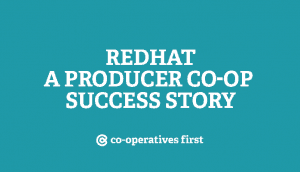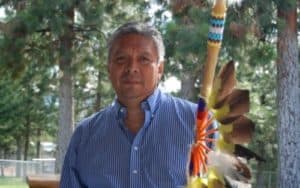In the late 90s, Joe Carter, Director of Education for Onion Lake First Nation, recognized First Nations had similar financial services needs to their non-Indigenous counterparts, but those needs weren’t being met in the same way. He saw an opportunity and went to work.
Strength in Numbers
Understanding how these products and services could best serve First Nations peoples was his first challenge. As a representative of teachers in his community, he knew they didn’t have access to the same types of service as teachers working in non-Indigenous communities. Carter decided a strength-in-numbers approach was the way to go.
Many Nations Financial Services Ltd is the result of his vision and hard work. The business provides financial and group/employee benefit services to First Nations-owned businesses, governments, and organizations.
“[Carter] understood that in order to attract quality teachers that he had to be able to offer benefits comparable to those they would get somewhere else,” said Gail Davison, Vice President of Operations for Many Nations. “When he went to the market there were not many companies that were willing to provide those benefits for First Nations. He believed that by coming together collectively they would be large enough that they would get the insurance companies’ attention.”
Reaching scale was Carter’s second challenge. He recognized Many Nations could increase its buying power and scale to provide better quality products to its members, including small Nations that might otherwise be unable to provide benefits to employees, if people from many First Nations worked together. The name fits, but the value proposition still needed to be taken to other Nations for buy-in.
Becoming a co-operative
Many Nations Financial started as a small not-for-profit organization in 1995, and over time it has grown from representing just Onion Lake First Nation to providing services to over 150 communities across the country. Carter’s ultimate goal, however, was for it to be a co-operative. In 2009 the business re-organized its structure to fulfill this dream.
“I think that part of his dream or his vision was … traditionally First Nations operated very co-operatively,” Davison said. “They shared everything they had.”
Establishing Many Nations as a nation-wide co-operative was a long process, but eventually, it became the first national Indigenous co-operative in Canada. Because its mandate is to provide services primarily to Indigenous organizations, and only Indigenous organizations became co-op members, Many Nations had to apply for a human rights exemption. This defining factor was key for the organization to “promote Indigenous business in as full a way as we possibly could,” said Davison.
Meeting specific member needs
Because the organization understands and meets the needs of First Nations communities, its products reflect First Nations’ unique and often challenging relationships with the Government of Canada and the policies of Indigenous and Northern Affairs Canada (INAC). One example of this difference is that Many Nations can design group benefit plans that maintain the rights granted to status Indians under the Indian Act and work around the Act to provide better overall coverage.
Structuring the business as a co-operative has its advantages. As a co-operative Many Nations can scale to increase its purchasing power, but also be responsive to its client shareholders or members. This equivalency between client and owner has its advantages. The co-op board is elected from client representatives and delegates. The client-driven board and management structure creates a high level of transparency that can be missing with other insurance brokers. Plus, client feedback is built into the structure, which means the business can respond to concerns and changing needs in a way that is responsive and relatively agile.
“What the co-op structure allows us to do is to pull together all the voices of the First Nations and be able to deliver a product through our business structure that isn’t entirely focused on profit,” said Tom Hodgson, Vice President of Business Development.
Any profits generated by the business are returned to the client shareholders and Many Nations has been paying out patronage rebates since 2011. This patronage money can be used by the businesses and Nation shareholders in any way they see fit, which is a level of autonomy not found in many other models. At times these patronage returns have been used to fix up local schools. At other times, because patronage is distributed in November, the money has been used to provide Christmas hampers to families.
This client-centred approach, and the distribution of profits back to shareholders, helps members feel a sense of ownership.
The value of the co-op structure
According to Hodgson, the co-operative business model can be an ideal fit for some Indigenous businesses.
“When it comes specifically to opportunities for Indigenous organizations to look at an alternate way to pool resources in an equitable, accountable way, and be able to wrap a transparent process around that, especially when you’re dealing with multiple stakeholders, there’s a big benefit to that,” he said. “I think there’s a real value and enhanced value to the Indigenous community with the co-op structure.”




